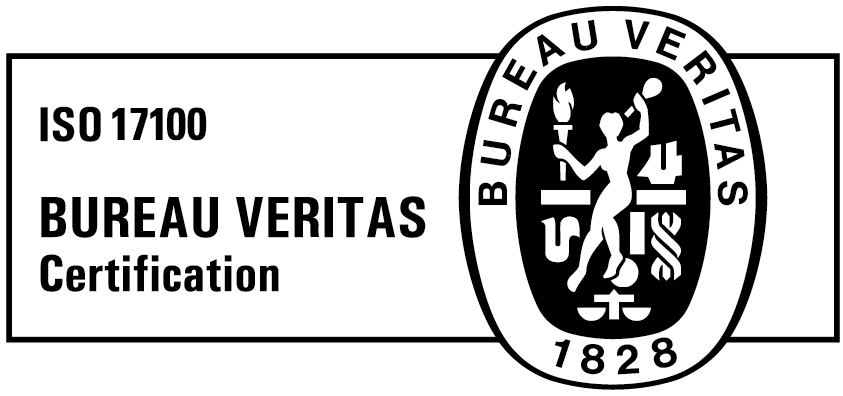The translation industry is finally at an exciting tipping point as smaller to medium-sized businesses are including translation and localization in their business strategies. And using translation and localization as tools to grow their business. This is something that has been adopted by large multinationals for many years. But now that translation service providers use AI technology to help, translation has become increasingly affordable. This means small, and medium-sized businesses can also grow and benefit from localization.
Quick Recap on Localization
Localization includes the translation of content. But it takes translation a few steps further. It goes beyond word-for-word translation and changes texts, marketing materials, and the like to be relevant to the target audience. So, changing the messaging to be suitable for the target audiences’ needs, beliefs, cultural context, and so on.
Localization ensures your content is culturally sensitive, relevant, and engaging. It also includes adapting a translation, so it is suitable for a certain region. For example, Spanish spoken and written in Mexico is not the same as that spoken and written in Spain. Just like French in Canada is not the same as French in France or North Africa. Cultures and regions differ – so does language.

For more on translation jargon, view our blog on translation terminology.
Using Localization To Grow Your Business
Here are a few key steps on how to implement localization as a business strategy to help your business grow.
#1 Research Your Markets

An important part of localization is research.
Understand the global markets your business wants to “grow” into. It’s important to know regulations, permissions, certifications, and other legal requirements. Understand what is culturally significant and what is taboo in regions.
Why does this matter? Well, the legal requirements speak for themselves. But your brand can come across as irrelevant or offensive if you don’t do proper research.
For example, Pampers (the diaper brand) entered Japan. In Western Culture, it is normal to have imagery of a stork bringing a baby to you. But this puzzled the Japanese market. The local equivalent would be a peach bringing the baby. This is something only thorough research would have uncovered, or if they made use of a local translation expert.
#2 Decide What Languages To Translate And Localize To
The second step is deciding what language or languages you should be translating to. This may seem simple. But it’s important to understand that regional dialects may differ.
For example, the primary spoken languages in China are Mandarin, Cantonese, Wu, and Min. From these, there are dozens of versions/dialects. If you enter a market and use the wrong dialect, you might as well not translate or localize your content.

Why does this matter? For this example, here’s a throwback to a brand that no longer exists – Braniff Airlines. In 1987, they installed leather seats in their planes and wanted all their customers to know about it. They translated their then English slogan “Fly in leather” into Spanish, “Vuela en Cuero”. This was a fine translation in most of Latin America. Unfortunately, in Mexico, it meant “fly naked”. Not exactly something you’d want to encourage. This just shows the importance of selecting the correct language and dialect. And ensuring your content is localized and checked by a native speaker.
#3 Develop A Localization Plan

There is that old business cliché “fail to plan, then plan to fail”. This is always true.
Businesses need to develop a localization strategy to grow. As a business, you need to decide what content you will translate and localize.
Marketing materials? Product Descriptions? Product Names? Manuals? Your website?
Then you also need to decide whether you will do your translations and localizations in-house. Or if your business will make use of a professional translation platform and language service provider. Providers that will have the resources to use native speakers and industry experts.
Why does this matter? Besides the “fail to plan, plan to fail” adage, we recommend small to medium-sized businesses learn from the big multinational brands’ mistakes. This will ensure your business effectively translates, enters new markets successfully, and grows. Because obviously, the aim is for your business to improve its ROI and grow.
Here’s another example of a big brand that didn’t plan correctly and saw its sales plummet. Mercedes-Benz decided to rename its brand “Bensi” when entering China. Turns out this means “rush to die”. Clearly, they didn’t initially have a proper localization plan in place.
#4 Use the Right Imagery And Color For Your Target Market

It’s exceptionally important to use regionally specific imagery. And to ensure you avoid cultural appropriation and stereotypes as a business. Especially in the age of “cancel culture”.
It is also important to know that colors have different meanings in different regions.
Colors and imagery are definitely something that needs to be localized and ideally checked by a native of the region.
Why does this matter? Taking the color red, in North and South America and Europe it is often connected with love and passion. In South Africa, the red in their flag represents violence and sacrifice made by their people. In China, red represents luck and fertility. In India, red can represent fear, wealth, purity, love, marriage, and beauty. In Thailand, red often symbolizes their sun god, Surya.
Blue can have both negative and positive meanings. For example, in North America, it can represent tranquility and reliability but can also represent depression and loneliness. Blue is often a symbol of masculinity in Europe and North America whereas in China it is often connected with femininity. In most parts of Asia and the Middle East, blue represents immortality. In Turkey, Greece, and Albania blue is said to repel evil. In these countries, blue amulets are often worn to protect the wearer from evil.
These two colors demonstrate how important visual aspects are when localizing content. And something to consider when wanting your business to “grow” into new markets.
#5 Identify The Right Channels To Distribute Your Localized Content
It is important to consider what channels will be the most effective for your localized content to be distributed on.
For one country, Twitter may be an important tool for you to use. In another country, traditional marketing may be more effective or SMSes.

You may have decided in your planning phase only to focus on your product materials – manuals, brochures, and the like. Or that localizing your website is a priority. Whatever your decision, it is important that your localized content suits the channel and the audience. Some cultures may be more formal in their written communication than others. Website localization will require a different technique and approach than a product manual. And so on.
It is important to understand your target market and deliver exactly what they need, in the way they expect to receive it. It is highly recommended to make use of a local translator and industry expert to ensure that your business successfully localizes and adapts content, and grows.
Why does this matter? If you don’t choose the right channels or don’t communicate effectively your localization efforts will not help your business to grow. You won’t likely see a positive return on investment either.
Making Localization An Easy Method For Your Business To Grow
It’s easy to feel overwhelmed when considering some of the key steps in successful localization. But it doesn’t have to be.
What is great about platforms like Taia is that you get access to translators that are native to the target audience and industry experts. So, not only do they understand your industry but they are proficient in the original language and a native speaker of the target language. This means you don’t have to spend time and resources on ensuring you are relevant, culturally sensitive, and accurate when wanting to grow your business through localization.

Taia is based in Europe but has native specialists based across the world. We specialize in translation and localization across all industries, continents, and in over 97 language pairs.
Sign up to our platform for free and start translating immediately, or book a demo with our team in your time zone.
Liked this content?
Get notified when we publish something similar.
* We don’t spam your email or share it with anyone!




